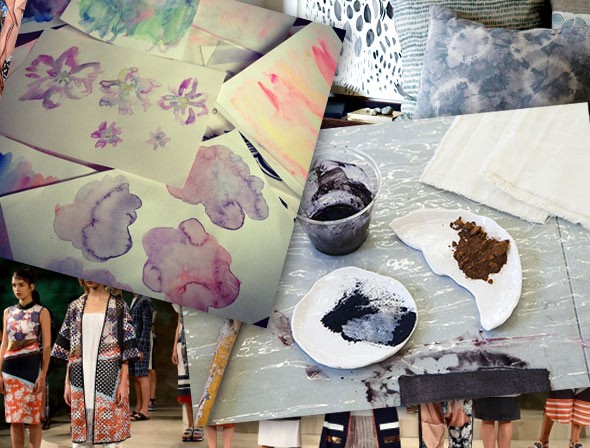How To | Find Your Niche!
Resources
When you’re first starting out in print design, there are many challenges to creating prints that are both visionary and sellable. You are an artist with something to say, and you also want to make money doing what you love. It’s important to explore your own style for a period of time to allow your natural voice to emerge. Drawing and painting by hand is key. Creating repeats is another important step as you’ll start to learn the technical skills of print design. For a detailed look at the technical side of print repeats, check out Repeat After Me and our Video Tutorials.
When you have a sizable collection of patterns to look at (at least 50-100 prints depending on how developed they are), it’s a great idea to start to think about where they might fit into the marketplace. There is the huge apparel/accessories world (and within that many subsets). Then, there are the worlds of interiors, paper goods, beauty, and quilting. Our e-book Pattern Design & Beyond gets into more details on the marketplace.
Take a good look at your work. Is it whimsical and illustrational with conversational elements? Perhaps childrenswear and paper goods might be a good fit for you. Does it have a sophisticated look with flowing repeats? Then high end womenswear could be your niche. But what if you enjoy jumping around with styles and exploring new ones continually? This can work to your advantage as you have more of a choice about which market you might want to target.
When designing for interiors, longevity is key. Most home owners, business owners, and interior designers want to create a look that is unique yet timeless and classic for their interior. However, that’s not to say that the occasional loud pop of color and crazy pattern doesn’t make it into a modern interior. However, trends change much more slowly here and you could focus on quality rather than quantity. Unless creating a custom look, interior designers typically select from pre-existing fabric and wallpaper collections. For examples of how other designers do it, take a look at some of our favorite interior textile studios, such as Rebecca Atwood and Calico Wallpaper. You may decide to take the interiors route if you’re interested in printing or dyeing your your own fabric. Quality of print/execution is very important as objects like throw pillows and rugs will be in heavy use, often for years.
The apparel world is much faster. With seasonal deliveries including Spring, High Summer, Resort, pre-Fall, Fall, and Holiday, the fashion market has many opportunities to buy designs. Trends also change fairly quickly although we have found that certain trends stick around longer than anticipated. For example, tribal prints have been in vogue for quite some time and still continue to sell, as long as they are updated or modified each buying season. To work in the fashion industry it is important to stay on top of trends. There are trend services like WGSN or Fashion Snoops that offer comprehensive coverage while our targeted trend guides focus specifically on print and color.
Custom work is needed in both interiors and fashion so here’s where your unique style can really shine. It’s especially important to have a great portfolio that shows off your work and can attract clients. Sites like Squarespace, Wix and WordPress have tons of templates you can use to create a beautiful portfolio site. Community sites like Behance and Coroflot provide templates and plenty of built-in tools to help clients find you.
We’d love to hear from you. Which market(s) are you leaning towards and why?

